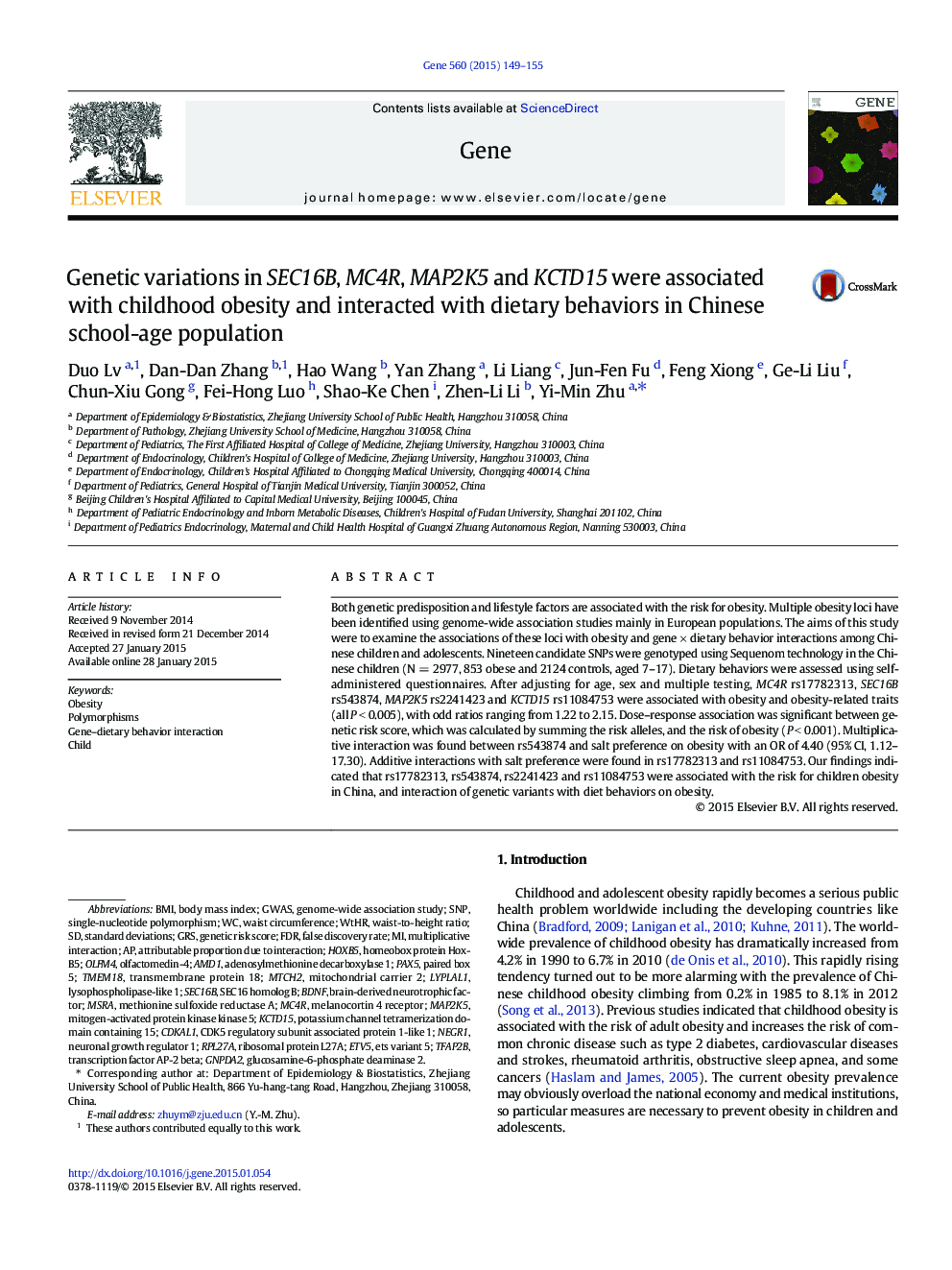| Article ID | Journal | Published Year | Pages | File Type |
|---|---|---|---|---|
| 2815855 | Gene | 2015 | 7 Pages |
•Genetic variations of rs17782313, rs543874, rs2241423 and rs11084753 were associated with the risk for children obesity in China•Dose response association between genetic susceptibility and the risk of obesity•There were interactions between genetic susceptibility and diet behaviors on obesity
Both genetic predisposition and lifestyle factors are associated with the risk for obesity. Multiple obesity loci have been identified using genome-wide association studies mainly in European populations. The aims of this study were to examine the associations of these loci with obesity and gene × dietary behavior interactions among Chinese children and adolescents. Nineteen candidate SNPs were genotyped using Sequenom technology in the Chinese children (N = 2977, 853 obese and 2124 controls, aged 7–17). Dietary behaviors were assessed using self-administered questionnaires. After adjusting for age, sex and multiple testing, MC4R rs17782313, SEC16B rs543874, MAP2K5 rs2241423 and KCTD15 rs11084753 were associated with obesity and obesity-related traits (all P < 0.005), with odd ratios ranging from 1.22 to 2.15. Dose–response association was significant between genetic risk score, which was calculated by summing the risk alleles, and the risk of obesity (P < 0.001). Multiplicative interaction was found between rs543874 and salt preference on obesity with an OR of 4.40 (95% CI, 1.12–17.30). Additive interactions with salt preference were found in rs17782313 and rs11084753. Our findings indicated that rs17782313, rs543874, rs2241423 and rs11084753 were associated with the risk for children obesity in China, and interaction of genetic variants with diet behaviors on obesity.
